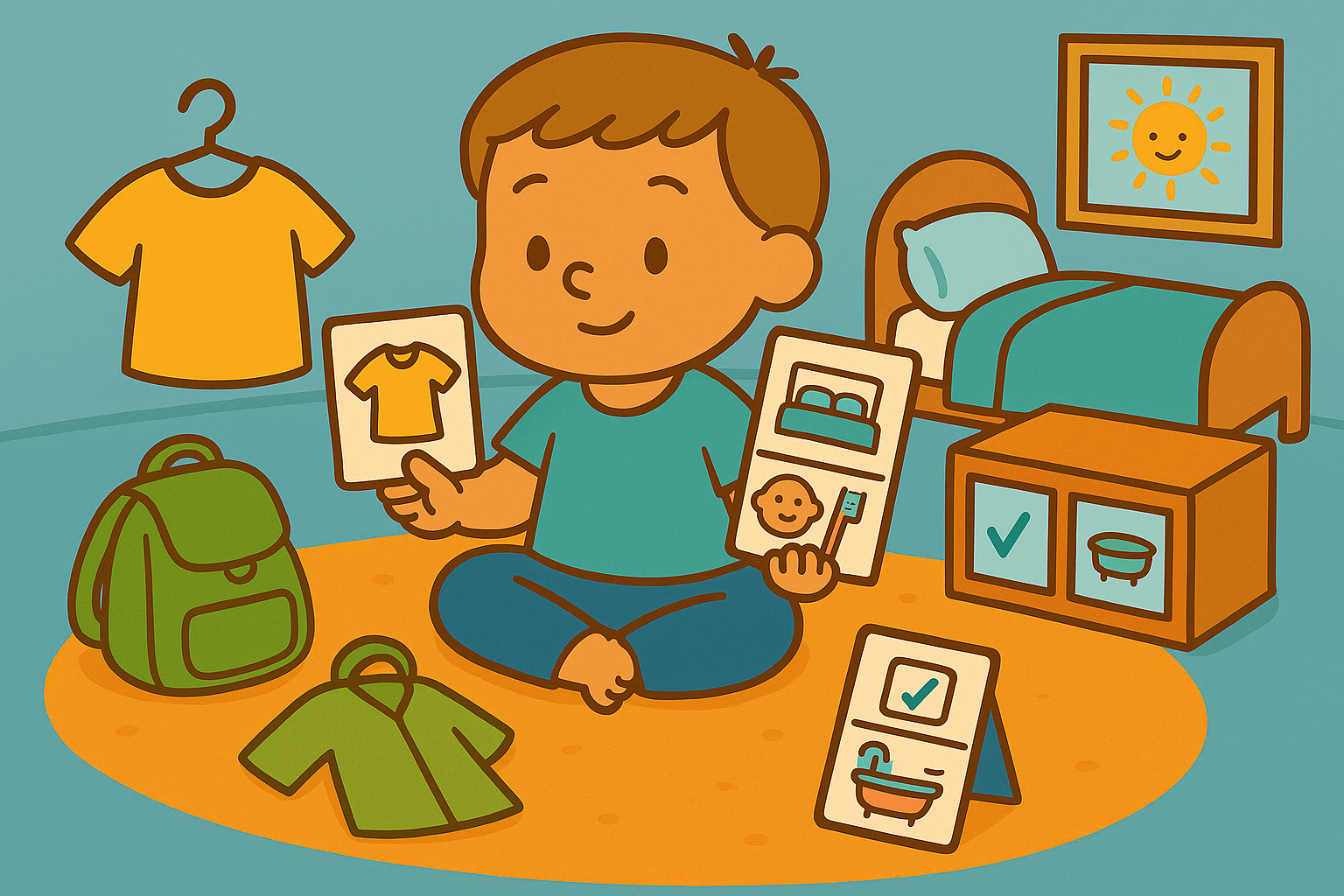Building Independence Through Routine Choice
Building Independence Through Routine Choice
Children start building independence when they can make choices within familiar structures. Routines give them a safe framework, and choice gives them ownership—a powerful combination that builds confidence, emotional regulation, and self-direction. When children participate in decisions about their day, they begin to see themselves not just as followers—but as capable contributors to family life.
Routine choice doesn’t mean giving children full control. It means guiding them with gentle options that support their growing autonomy while keeping the day predictable and grounded. The goal is simple: What can your child take ownership of today—without feeling overwhelmed?
Why Choice Matters for Independence
Choice is one of the strongest motivators for children. When children feel choice, they participate. When they feel forced, they resist. Offering choice inside routine creates a safe pathway toward independence.
Benefits of guided choice:
Reduces power struggles
Builds problem-solving skills
Fosters cooperation
Develops initiative
Encourages responsibility
Children don’t need unlimited freedom—they need meaningful ownership.
The Role of Predictability in Safe Choice
Children need structure before they can benefit from choice. Predictable routines help regulate emotions and reduce anxiety, as explored in The Role of Predictability in Reducing Childhood Anxiety.
Helpful foundational elements:
Clear daily rhythm
Visual routines
Consistent meal and sleep times
Predictable activity flow
Small choice points along the way
Predictability is not rigidity—it’s the foundation for confident decisions.
Types of Choices That Build Autonomy
Offering choice doesn’t need to be complicated. Even tiny decisions help children feel capable.
Simple daily choices:
Which pajamas to wear
Red or blue toothbrush
Snack A or snack B
Brush teeth first or put on socks first
Which book to read at bedtime
Choice works best when it’s limited, clear, and offered before the child is overwhelmed.
Visual Tools That Support Independence
Visuals make abstract decisions concrete. They help children see their options and understand their routine at a glance.
Visual tools to try:
Choice cards (“Snack 1 or Snack 2?”)
Velcro routine boards
“First/Then” charts
Color-coded bins for belongings
Morning and bedtime checklists
These strategies connect with those in How to Use Routine Charts for Visual Learners, where visual structure builds autonomy.
Building Routine Choice Into the Morning
Mornings are often the hardest time to allow choice—but even one or two options can shift the tone of the day.
Morning choice suggestions:
Choose outfit from two curated options
Select morning music playlist
Decide between toast or oatmeal
Pick which healthy drink to start with
Choose which book to bring in the car
When children choose, they feel invested instead of directed.
Encouraging Independent Cleanup Choices
Cleanup time is a powerful opportunity to build responsibility. This connects with strategies in Teaching Kids to Clean Up Without Resistance, where choice helps nurture cooperation.
Cleanup choices might include:
Where to start first
Which toy bin to fill
What music to play while cleaning
Whether they want a timer challenge
Which “helper role” they want today
Choice transforms cleanup from obligation to contribution.
Supporting Emotional Regulation Through Choice
Choice helps children express control over their environment—but it also helps them express control over their emotions.
Ways to offer emotional regulation choice:
“Do you need a hug or space?”
“Quiet corner or calming music?”
“Draw feelings or talk about them?”
“Walk or stretch to reset?”
“Should we breathe together or do it on your own?”
These decisions teach children that feelings don’t control them—they can learn to respond.
Knowing When Choice Overwhelms
Too many choices can lead to confusion, stress, or shutdown. Knowing when to remove choice is just as important as offering it.
Signs that a child is overwhelmed:
Refusal or meltdown after options
Frequent “I don’t know!” replies
Tears when decisions are required
Excessive time choosing
Avoidance of routine altogether
In those moments, offer structure first—and choice later.
Language That Encourages Capability
The way choices are presented shapes how children view themselves. The language used should invite—not pressure.
Try saying:
“Which one will you choose?”
“Do you want my help or want to try alone?”
“Let’s figure this out together.”
“You can do this—I’ll help you start.”
“What does your body need right now?”
Language guides confidence.
Gradually Increasing Responsibility
As children grow, their choices can expand. Ownership and routine responsibilities should grow with them—just enough to stretch their independence, without overwhelming them.
Age-based progression:
Toddlers: 2-option choices
Preschoolers: independent dressing, clean-up cues
Early elementary: simple task planning
Older kids: lead routines, set personal goals
This approach connects with Family Planning Nights: Setting Goals Together, where children begin practicing long-term thinking.
When Choice Leads to Independence
Eventually, children begin to understand that routines are not limits—they are tools that support freedom. Choice becomes confidence. Independence becomes identity.
And that belief shifts everything: from following directions to building a life where children feel capable, responsible, and deeply connected to their family—and to themselves.
This content is for educational purposes and is not a substitute for professional medical or psychological advice.
Popular Parenting Articles


